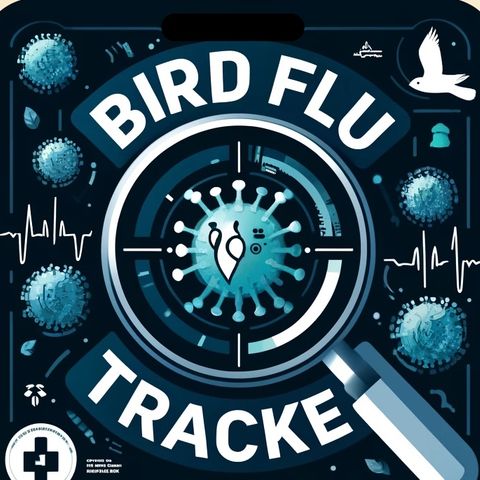Bird Flu update for 10-01-2024

Download and listen anywhere
Download your favorite episodes and enjoy them, wherever you are! Sign up or log in now to access offline listening.
Bird Flu update for 10-01-2024
This is an automatically generated transcript. Please note that complete accuracy is not guaranteed.
Description
The Tasmanian Devil, a unique and iconic species indigenous to Australia, could face severe risks if a deadly strain of bird flu currently spreading in various parts of the world...
show moreThe H5N1 strain, as identified in other regions, is known for its virulence and adaptability, often jumping between species and causing high mortality rates particularly in avian populations. Scientists worry that if this strain were to arrive in Australia, it could pose a new threat to wildlife, including the already vulnerable populations of the Tasmanian Devil.
The Tasmanian Devil, known scientifically as Sarcophilus harrisii, has suffered significant population declines over the last few decades, primarily due to the deadly Devil Facial Tumour Disease (DFTD), a transmissible cancer that has decimated up to 80% of its population in some areas. The introduction of a new pathogen could exacerbate the species' decline, posing yet another hurdle to its conservational management and survival.
Experts have cautioned that, given the interconnectedness of ecosystems, the bird flu could indirectly affect the Tasmanian Devil. Birds act as carriers of various pathogens, and an outbreak among bird populations could easily spread to other wildlife either through direct contact or via shared environments and food sources.
Conservationists are urging for preventive measures and increased surveillance of bird populations in Tasmania and the broader Australian continent. These measures are seen as essential to prevent the entry and establishment of the H5N1 strain in Australia. Preventive actions could include stricter biosecurity measures for incoming flights and shipments, particularly from regions currently battling outbreaks of the strain.
There’s also a significant push for funding towards wildlife health monitoring programs, which could play a pivotal role in early detection and containment of such diseases. Regular monitoring could help in taking timely actions that could curb the spread to susceptible species like the Tasmanian Devil.
The situation emphasizes the delicate balance within ecosystems and the unpredicted ways through which emerging diseases can influence conservation efforts and biodiversity. As the global movement of goods and people continues to rise, so does the risk of pathogenic transfer between continents, underscoring the importance of proactive global and local wildlife management strategies.
Information
| Author | QP-3 |
| Organization | William Corbin |
| Website | - |
| Tags |
Copyright 2024 - Spreaker Inc. an iHeartMedia Company
